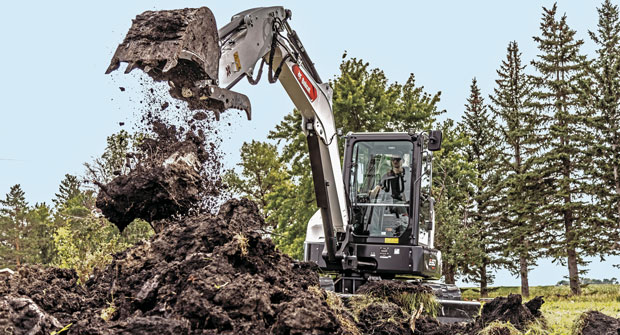A compact — or mini — excavator is a game-changer for landscape professionals of all levels. Its unmatched versatility and efficiency empower businesses to conquer a wide array of projects and jobsite challenges easily.
Compact excavators drive significant growth, expansion and unparalleled customer satisfaction by streamlining operations and increasing productivity. Regardless of your level of landscape experience, consider these essential factors when incorporating a compact excavator into your fleet.
Match To Needs
A compact excavator can be a valuable asset for both new and established landscape businesses. The decision to add this versatile tool depends mainly on the types of projects the contractor is involved in or plans to undertake as part of a growth strategy.
Contractors facing increasing demand for projects requiring precise digging, grading or accessing and working in tight spaces can significantly enhance their jobsite abilities and versatility with a compact excavator. It comes down to matching the excavator with the contractor’s needs, says Mike Fitzgerald, Bobcat marketing manager.
“Whether you’re a new owner or someone who already has one, the biggest thing to look for is matching the machine to your needs,” Fitzgerald says. “For example, if you’re a smaller contractor with a pickup truck, a smaller machine is easier to transport, will get you through gates and into backyards and will enable you to do projects like retaining walls and boulder work.”
And if you’re a larger, more established landscape contractor, while those needs may vary, utilizing a compact excavator on the jobsite still makes sense.
“You can really do so much with a compact excavator,” Fitzgerald says. “This machine’s flexibility will allow you to take on a lot of diverse projects and complete your jobs in less time.”
Full-Sized Options
Just because compact excavators are small in stature doesn’t mean they lack the excavating bells and whistles of their bigger brothers. Landscape professionals should note that most models feature enhanced auxiliary hydraulic capabilities, allowing for the use of various attachments such as augers, thumbs and hydraulic breakers, to name a few.
“Generally, compact excavators need sufficient power to handle various tasks without compromising performance,” says Lee Padgett, Takeuchi-US product manager. “Ensuring the excavator has enough horsepower to run hydraulic attachments effectively is essential for maintaining productivity.
“Modern compact excavators offer increased hydraulic flows, enabling the use of a broader range of attachments,” he adds. “This ensures that landscape contractors can perform demanding tasks without feeling limited by the machine’s smaller size.”
In addition, most modern compact excavator cabs are engineered for operator comfort. They feature controlled climates, joystick controls, touchscreens, suspension seats and an array of cameras for improved visibility and greater jobsite safety.
Labor Saver
By taking over more labor-intensive tasks, a compact excavator allows landscape contractors to focus on more skilled aspects of their work, increasing productivity and job satisfaction with fewer people dedicated to a jobsite.
“With a compact excavator, contractors are getting jobs done faster because they’re using machines instead of relying on manual labor,” says Justin Steger, a John Deere product marketing manager. “Suddenly, your workforce is more productive. Then you add attachments (to a compact excavator), and you’re getting even more work — more specialized work — done.”
Steger says another labor-saving feature of the compact excavator is the backfill blade.
“If you have to backfill a hole or a trench you’ve just dug, that (backfill blade) on a compact excavator makes that job so much faster just by being able to direct the dirt where it needs to go the first time,” he adds.


